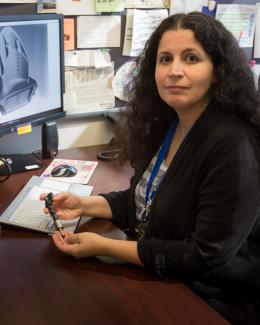Abstract
This paper addresses several aspects of the scientific utilization of the Oak Ridge National Laboratory High Flux Isotope Reactor (HFIR). Topics to be covered will include: 1) HFIR neutron scattering instruments and the formal instrument user program; 2) Recent upgrades to the neutron scattering instrument stations at the reactor, and 3) eMod a new tool for addressing instrument modifications and providing configuration control and design process for scientific instruments at HFIR and the Spallation Neutron Source (SNS). There are 15 operating neutron instrument stations at HFIR with 12 of them organized into a formal user program. Since the last presentation on HFIR instruments at IGORR we have installed a Single Crystal Quasi-Laue Diffractometer instrument called IMAGINE; and we have made significant upgrades to HFIR neutron scattering instruments including the Cold Triple Axis Instrument, the Wide Angle Neutron Diffractometer, the Powder Diffractometer, and the Neutron Imaging station. In addition, we have initiated upgrades to the Thermal Triple Axis Instrument and the Bio-SANS cold neutron instrument detector system. All of these upgrades are tied to a continuous effort to maintain a high level neutron scattering user program at the HFIR. For the purpose of tracking modifications such as those mentioned and configuration control we have been developing an electronic system for entering instrument modification requests that follows a modification or instrument project through concept development, design, fabrication, installation, and commissioning. This system, which we call eMod, electronically leads the task leader through a series of questions and checklists that then identifies such things as ES&H and radiological issues and then automatically designates specific individuals for the activity review process. The system has been in use for less than a year and we are still working out some of the inefficiencies, but we believe that this will become a very effective tool for achieving the configuration and process control believed to be necessary for scientific instrument systems.




